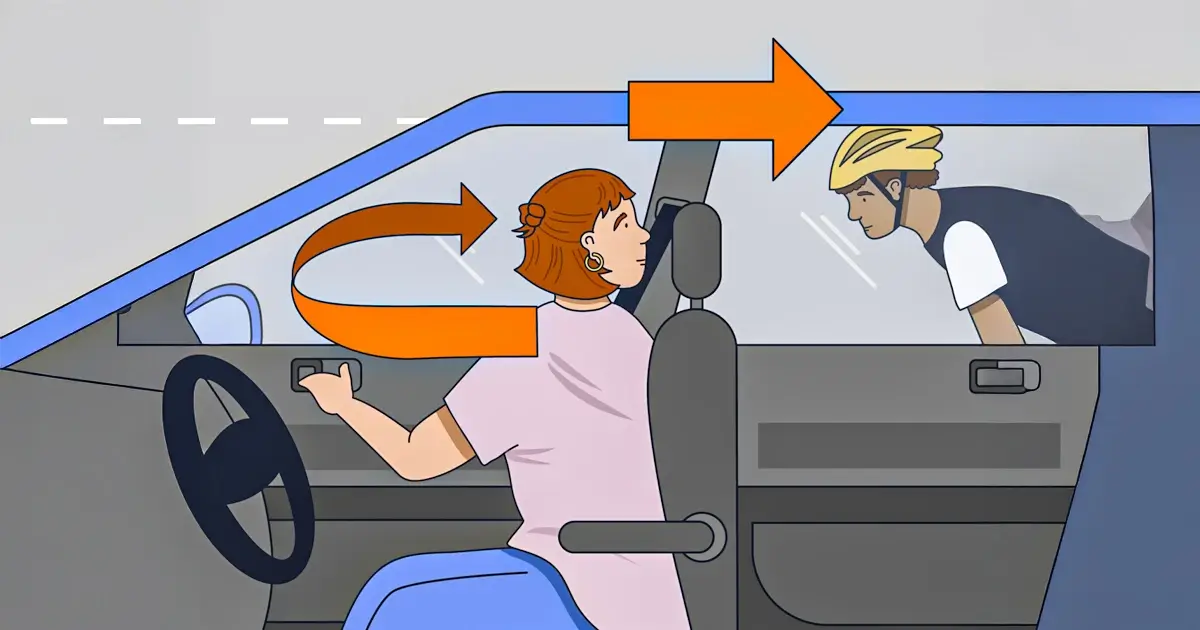Allow me to be direct: most collapses do not occur because people can’t steer. They arise because people suppose fellow drivers can. I realized this years earlier when a bus abruptly veered into my roadway without indicating. If I had relied on him to “do the correct deed,” I’d have been smashed. Protective driving is not about fear; it’s about endurance. It’s the skill of operating like every person else is nearly to commit a blunder, while you’re wise enough to notice it approaching.
See More Than What’s in Front of You
Protective driving begins with perception, not just optical sense, but alertness. Don’t only gaze at the fender in front of you; survey distinct downs the route. Check for brake lights of multiple cars forward, walkers near the edge, or a truck shaking as if the driver is sleepy. Detecting a hazard a few seconds earlier provides you with the response time that protects people.
I’ve created a routine to always realize what is in my reflectors. Every 8–10 seconds, I look left, right, and center. In that manner, when anything surprising occurs, I already recognize if I can switch tracks or if a rider is hiding in my unseen area. Imagine it as competing in chess on the route; you are not responding to the last action, you are predicting the upcoming one.
Space Is Your Best Friend
If you grasp one lesson from safe driving, let it be that: always keep a distance. Distance in front, gap behind, clearance to the edges. Following closely is almost a call for an accident, and still, I notice it every particular day on Indian freeways. The reality is, the additional car distance you keep isn’t misused time; it’s securing yourself an exit path.
I formerly had a truck explode a tire exactly ahead of me at highway pace. Since I had allowed gap, I had time to decelerate, turn, and prevent being ripped by whirling rubber. If I had been pressing his fender, that incident would have finished with an insurance demand—or more severe.
Expect the Unexpected From Everyone
Here’s the valuable attitude of protective driving: suppose the harshest, arrange for the safest. That vehicle in front? Imagine it’ll brake abruptly. That motorcyclist? Expect he’ll cross over without glancing. That walker? Suppose they’ll move out despite with traffic moving. By predicting these errors, you’re never caught off guard.
Once, in a packed city street, I decelerated although the car in front was moving well. My companion questioned why. I had observed a ball spinning across the route. Moments later, a child rushed behind it. Because I expected the most dangerous, I was beforehand prepared. That’s cautious driving in practice.
Control Your Own Speed and Emotions
Anger and frustration only boost hazards on the road, while protective driving is about selecting peace over a clash. You can’t manage careless drivers, but you can choose to allow them to overtake or join instead of confronting. I once attempted to “instruct lessons” by suddenly stopping and hindering others, till I almost created a collision with a small cab. That time revealed to me that arrogance has no position behind the steering wheel. Real success is attaining your target securely, not showing a matter anyone will recall.
Keep Your Escape Routes Open
Every skilled safe driver understands this: never trap yourself inside. On freeways, don’t drive squeezed between two trucks. In the urban area, don’t remain stuck between a bus and a barrier. Always keep yourself an “escape.”
For me, this shows I never operate in other vehicles’ hidden areas longer than required. And when halting at indicators, I keep sufficient distance in front so I can turn out if necessary. Imagine it similar to this: protective driving is less about escaping the accident in particular, and more about granting you choices when something turns bad.
My Personal Take: Defensive Driving Is a Habit, Not a Trick
Precautionary driving isn’t about a particular special skill; it’s about regular practices. Looking reflectors, maintaining distance, expecting mistakes, remaining relaxed—perform it long enough, and it turns natural habit. And the reward is great: you operate with less pressure, fewer narrow accidents, and a much greater opportunity of reaching home safely.
The twist? When you drive carefully, you also move more gently and often conserve fuel.
Which Type of Driver Are You?
Defensive driving is not as much about talent as it is about attitude, and every driver belongs to a specific type. The Reflexive Driver only reacts once risk is already occurring, often remaining a stage behind developing events. The Forceful Driver thinks forcing control on others makes the road more secure, but in reality, their anger often produces new dangers. The Protective Driver stays attentive, predicts mistakes, and always keeps room to adjust. They might not be the fastest, but they’re regularly the most secure on the road.
Conclusion
Roads are uncertain, drivers are inconsistent, and errors are unavoidable. But with secure driving, you’re not only dependent on others, you’re deliberately securing yourself. Drive like others else perhaps mess up, and you’ll be the only one who does not.
